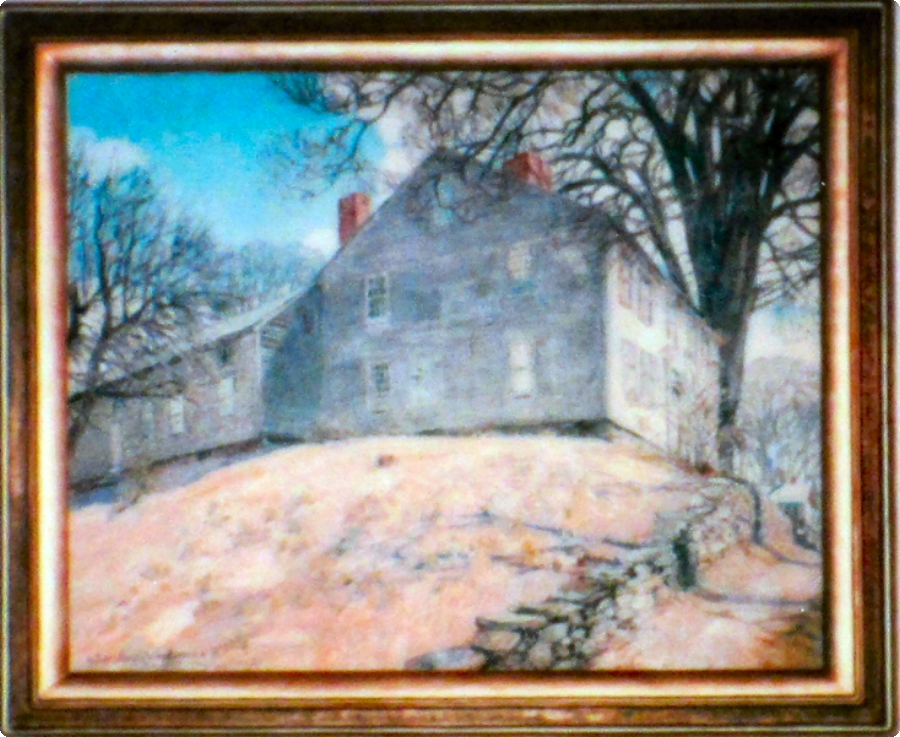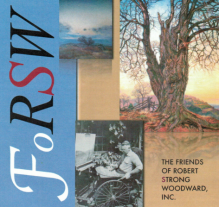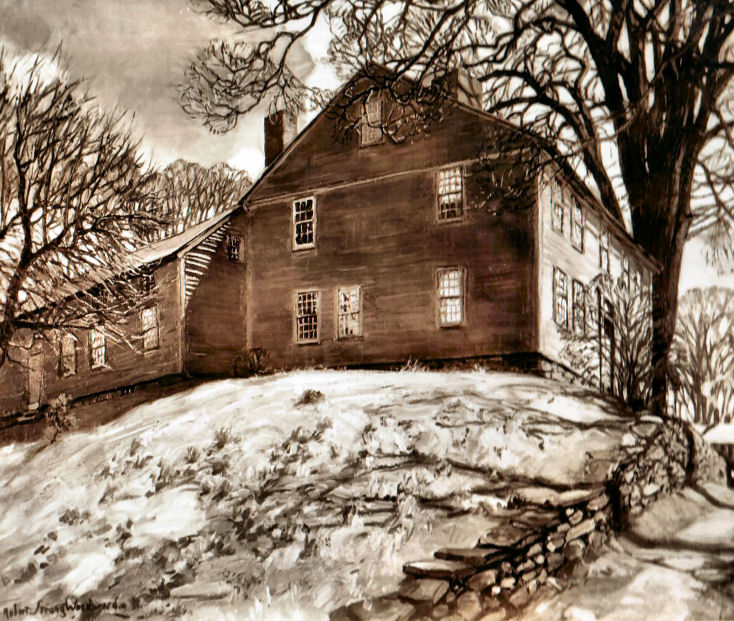Quick Reference
Prior to Nov. 1920
The Abercrombie House
Old Deerfield, Mass.
Oil on Canvas
Unknown
Houses
25 x 30
Unknown
NA
Featured Artwork: Grey House; Deerfield
RSW's Diary Comments
 There are no diary comments for this painting because we believe
Woodward destroyed it after making a new version in 1939. The artist did not start assembling his record of
paintings until 1941 - '42.
There are no diary comments for this painting because we believe
Woodward destroyed it after making a new version in 1939. The artist did not start assembling his record of
paintings until 1941 - '42.
Diary Comment from, From Old Deerfield:
"Painted in 1939. Painted in studio from an earlier canvas (1932) of the same subject which was never satisfactory and which I destroyed. The old Abercrombie House of Old Deerfield."
Editor's Note:
This is an incredible situation. We have no other example where Woodward made a painting, exhibited it twice at very respectable exhibitions, and almost twenty years later painting another version and destroy the original. And it is not that he hadn't shown something and later destroyed it after making a new one... it is that he sent it to Concord, a highly regarded exhibition, and then later lent it to the Deerfield Academy of decorate their new dormitory. A show that got extended because it was so well received.
Additional Notes

 An image of a Polaroid taken of From Old Deerfield.
An image of a Polaroid taken of From Old Deerfield.
 What's more is that there is also a crayon of this same scene making it
significant to Woodward's brand. Places like the Keach Farm, or the
Halifax House, or even
Purinton Hill have entire galleries devoted to his study of these places. Yet still, the subject has its place among the
"Goodnow Pasture" (5 versions), or Mary Lyon's anything, (church 5 versions), (house 3), (hill 5+) .
What's more is that there is also a crayon of this same scene making it
significant to Woodward's brand. Places like the Keach Farm, or the
Halifax House, or even
Purinton Hill have entire galleries devoted to his study of these places. Yet still, the subject has its place among the
"Goodnow Pasture" (5 versions), or Mary Lyon's anything, (church 5 versions), (house 3), (hill 5+) .
Also, in
1932 the house was reportedly owned by another artist in the Christian Science Monitor. A contemporary of Woodward's,
artist Stephen Maniatty. Maniatty was only 10 years old in 1920 so we do not think he lived there when Woodward
initially painted it but by 1932 he apparently did, although he still had not graduated from MassArt in Boston. As an interesting
aside, Woodward's high school friend and former roommate at art school,
Joseph Cowell was teaching at MassArt (then called the Massachusetts School of Art). Our research shows Maniatty
painted scenes from Deerfield and Springfield and so we have no reason to think this information is incorrect. If we include
the other Deerfield subject, the "Little Brown House" on Albany Street, the former studio of portrait artist George Fuller
 Also see From Old
Deerfield and Old Gray House; Deerfield
for more information.
Also see From Old
Deerfield and Old Gray House; Deerfield
for more information.



